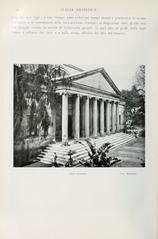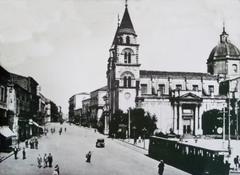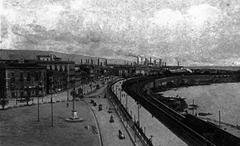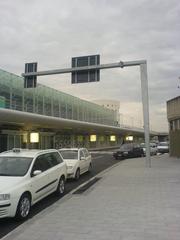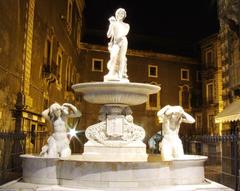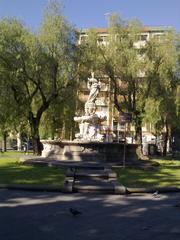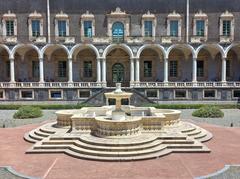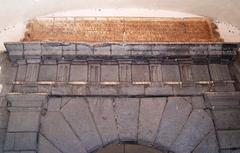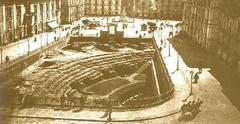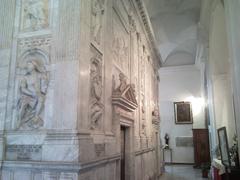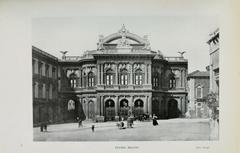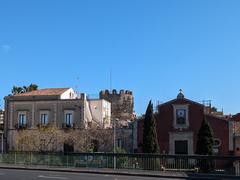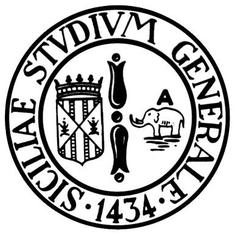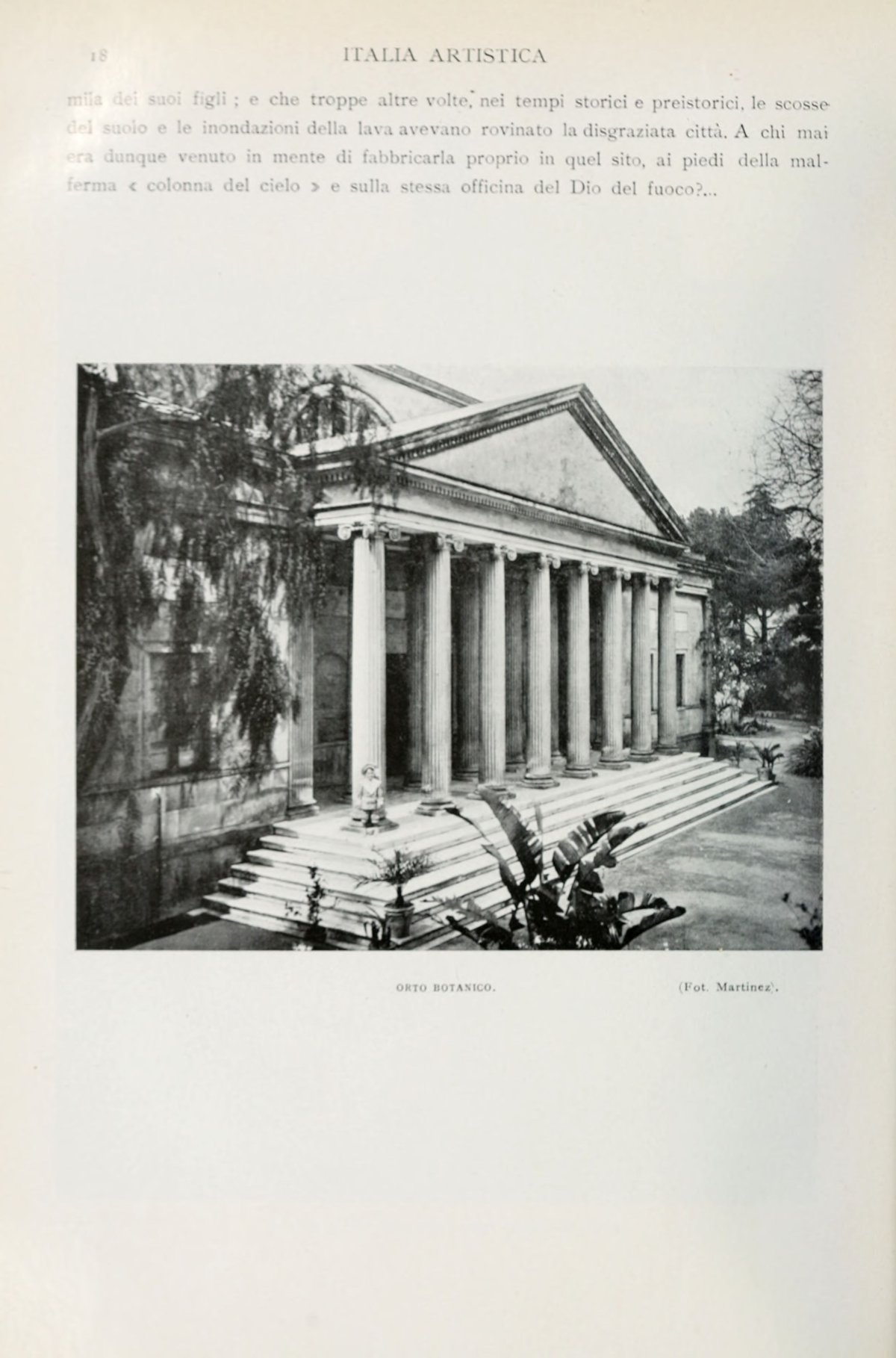
Orto Botanico dell’Università di Catania: Visiting Hours, Tickets, and Complete Guide to Catania’s Botanical Treasure
Date: 15/06/2025
Introduction
Nestled within the vibrant city of Catania, Sicily, the Orto Botanico dell’Università di Catania is a historic and scientifically significant botanical garden. Established in 1858 by Francesco Tornabene Roccaforte, the garden is a living repository of over 3,500 plant species from around the world and serves as a hub for research, conservation, and education. Spanning 16,000 square meters, it merges neoclassical design with diverse plant habitats, including areas dedicated to both exotic species (Hortus Universalis) and Sicily’s native flora (Hortus Siculus), featuring endangered endemics such as Zelkova sicula and Ptilostemon greuterii (Wikipedia; UNICT).
Over its long history, the Orto Botanico has endured periods of wartime damage, postwar recovery, and modern revitalization, including the restoration of the Tepidarium greenhouse and the expansion of one of Italy’s richest succulent collections. Today, managed by the University of Catania’s Department of Biological, Geological, and Environmental Sciences, the garden is a green haven within the city and actively participates in global conservation networks. Through guided tours, workshops, and research initiatives, it invites visitors, researchers, and enthusiasts to experience its botanical riches (Antropocene; Officine Culturali).
This guide compiles all essential visitor information—hours, ticketing, highlights, and travel tips—to ensure a memorable and enriching visit (Official Website).
Contents
- The Garden’s History: Foundation to Modern Day
- Visiting Information: Hours, Admission, Accessibility
- What to See: Garden Layout and Plant Collections
- Guided Tours, Events, and Public Programs
- Nearby Historic Attractions
- Practical Visitor Tips and FAQs
- Contact & Further Resources
The Orto Botanico dell’Università di Catania: History & Evolution
Foundation and Early Development
The Orto Botanico’s roots trace back to the mid-19th century, championed by botanist Francesco Tornabene Roccaforte. The initial attempt in 1847 was thwarted by political upheaval, but perseverance led to the garden’s foundation in 1858 on a new site, with architect Mario Di Stefano designing a neoclassical layout that remains largely intact (Wikipedia; Antropocene).
Layout
- Hortus Universalis: About 13,000 m², Italianate symmetry, with formal avenues and three circular aquatic pools for exotic and non-native species (Enjoy Sicilia).
- Hortus Siculus: 3,000 m², added in 1865, recreating typical Sicilian habitats to conserve native flora (Antropocene).
The garden’s first plantings were sourced from across Europe, laying the foundation for collections that now span continents.
Growth, Science, and Conservation
Through the early 20th century, a series of distinguished directors shaped its scientific direction. Notably, Fridiano Cavara expanded research, including acclimatizing alpine plants on Mount Etna. Later, Luigi Buscalioni modernized facilities and reorganized collections, introducing new taxonomic systems (Antropocene).
Wartime Challenge and Modern Renewal
World War II caused significant damage, leading to the demolition of the original Tepidarium greenhouse. Postwar directors initiated restoration and revitalization, culminating in the 2008 reconstruction of the Tepidarium and renewed focus on research and public engagement (Orto Botanico UNICT).
Today: Conservation and Public Engagement
Currently, the Orto Botanico is a member of Botanic Gardens Conservation International (BGCI, code CAT), with:
- A reconstructed Tepidarium housing over 160 tropical species
- One of Italy’s most extensive outdoor succulent collections, with about 2,000 species
- Significant palm and endemic Sicilian plant collections
- An herbarium supporting global research (UNICT)
Urban expansion has limited the garden’s physical growth, but it remains a flourishing green sanctuary and a vital center for conservation and education.
Visiting the Orto Botanico dell’Università di Catania
Hours and Admission
- Open: Tuesday to Sunday, 9:00 AM – 6:00 PM (last entry 5:30 PM; hours may vary seasonally)
- Closed: Mondays and public holidays
- Admission: Typically free for individual visitors; special exhibitions, guided tours, or events may require a ticket (€5 general, €3 reduced for students/seniors, free for children under 12 and University students)
- Booking: Guided tours and group visits require advance reservation (Officine Culturali)
Accessibility
- Wheelchair accessible with paved paths and ramps; assistance available upon request.
- Benches and shaded rest spots throughout; accessible restrooms on-site.
Getting There
- Address: Via Etnea, 397, 95128 Catania, Italy
- Transport: Walking distance from the city center; served by buses, trams, and taxis.
- Parking: Limited street parking—public transport is recommended.
What to See: Garden Layout and Collections
Main Sections
- Hortus Universalis: Formal geometric beds with global exotics, three aquatic plant basins, and the Tepidarium tropical greenhouse.
- Hortus Siculus: Native Sicilian plants, with recreated habitats—rocky coasts, sand dunes, woodlands, and wetlands (UNICT).
Notable Collections
- Succulents: Over 2,000 species, including rare cacti and euphorbias, many grown outdoors (Orto Botanico Italia).
- Palms: More than 100 species, with rare specimens from South America and the Mediterranean.
- Sicilian Endemics: Zelkova sicula, Ptilostemon greuterii, Dianthus rupicola—key for regional conservation.
- Aquatic and Tropical Plants: Water lilies, ferns, orchids, and other exotics in the Tepidarium greenhouse and outdoor pools.
- Medicinal and Edible Plants: Educational displays on traditional uses.
- Herbarium and Research Areas: Occasionally accessible via guided tours.
Visitor Experience
- Well-marked paths, interpretive signage, and virtual resources enhance exploration.
- Photography is permitted for personal use (no flash in greenhouses).
- The garden is home to diverse birds and pollinators, making it ideal for nature enthusiasts.
Guided Tours, Events, and Public Programs
- Guided Tours: Offered regularly, providing in-depth knowledge about collections, history, and conservation. English tours available upon request (Officine Culturali).
- Workshops & Events: Includes plant exhibitions, lectures, and seasonal celebrations. Check the official website or Officine Culturali for schedules.
Nearby Historic Attractions
Enhance your visit by exploring Catania’s cultural landmarks:
- Piazza Duomo: Baroque cathedral and iconic elephant fountain.
- Via Etnea: Bustling shopping and café street.
- Roman Theatre & Amphitheatre: Ancient ruins in the city center.
- Bellini Gardens: Expansive public park nearby.
- Fish Market: Vibrant local atmosphere.
Practical Visitor Tips
- Best Time: Spring and autumn offer mild weather and lush garden displays (Salt in Our Hair).
- Duration: Allow 1–2 hours for a comprehensive visit.
- Dress: Comfortable footwear and sun protection recommended.
- Language: Main signage in Italian; scientific names are universal. English tours on request.
- Food: No café onsite, but many options nearby on Via Etnea.
- Pets: Not permitted to protect collections.
Frequently Asked Questions (FAQ)
Q: What are the opening hours?
A: Tuesday to Sunday, 9:00 AM–6:00 PM (check official website for seasonal variations).
Q: Is there an entrance fee?
A: General admission is free; guided tours and special events may require a ticket.
Q: Is the garden wheelchair accessible?
A: Yes, with paved paths and ramps.
Q: Can I take photos?
A: Yes, for personal use; avoid flash in greenhouses.
Q: How do I book a guided tour?
A: Via Officine Culturali or by phone.
Contact & Further Resources
- Official Website: Orto Botanico dell’Università di Catania
- Guided Tours: Officine Culturali
- Phone: +39 095 7102767 / +39 334 9242464 (WhatsApp)
- Address: Via Etnea, 397, 95128 Catania, Italy
Stay informed about events and updates by following the garden on social media and downloading the Audiala app for personalized guides and cultural tips.
Conclusion
The Orto Botanico dell’Università di Catania is a vibrant blend of history, science, and natural beauty. Its collections and educational programs make it a must-visit for anyone exploring the cultural heart of Sicily. For the most up-to-date information, consult the official website and related resources. Enhance your experience with guided tours, seasonal events, and the Audiala app, ensuring a memorable journey into Sicily’s botanical heritage.
Sources
- Antropocene
- Wikipedia
- Official Orto Botanico dell’Università di Catania Website
- Officine Culturali
- University of Catania Museum Page
- Enjoy Sicilia
- SiciliaReport
- Salt in Our Hair
- Orto Botanico Italia
- https://tomsflowerclub.ch/pages/catania-orto-botanico-delluniversita-di-catania
- https://www.cataniatoday.it/blog/on-the-road/orto-botanico-universitario-museo-giardino-catania.html
- Biodiversity Heritage Library
